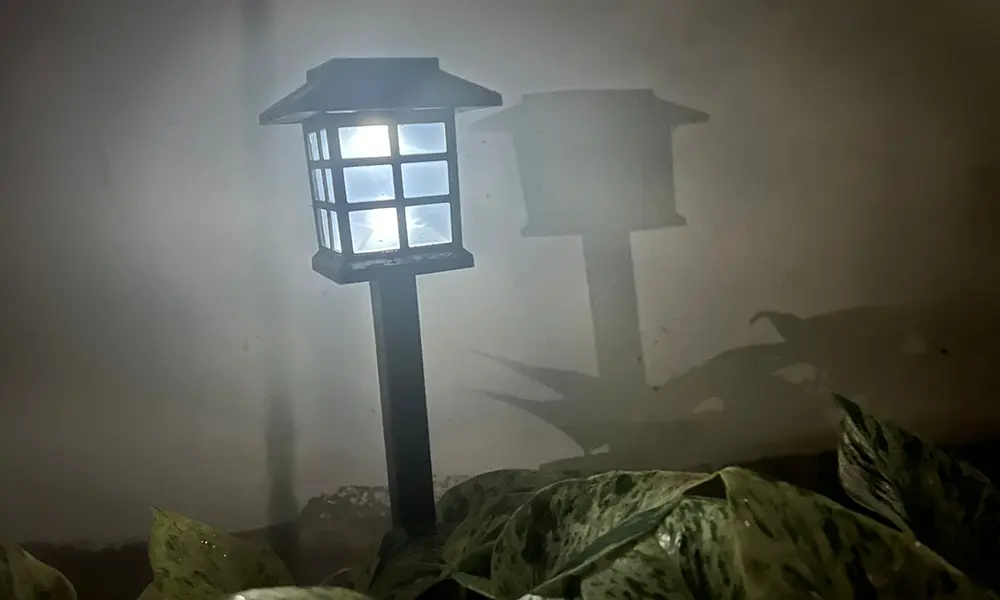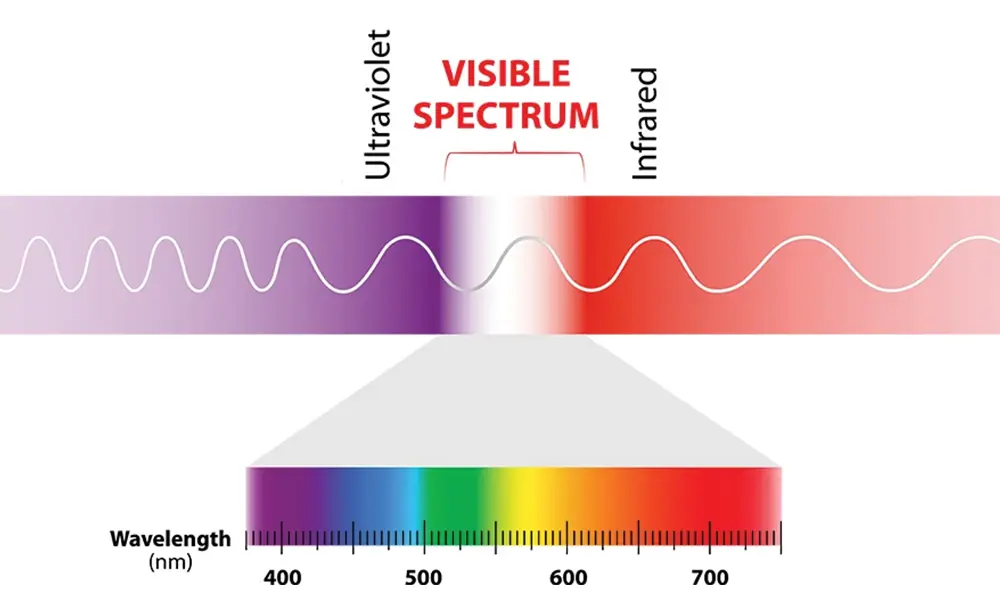Solar lights can attract bugs, mainly if they emit a bright, warm light that is in the infrared region (heat). This is because bugs are attracted to heat for hunting for food. Additionally, some types of solar lights may produce UV light, which can also attract bugs.

Why are bugs attracted to solar Lights? Know Science!
Insects can sense both infrared and ultraviolet at night. This ability helps them to navigate the environment better than other animals.
This evolutionary advantage helps them to hunt other insects or narrow down a host’s body heat for getting food, says research work.
Even mosquitoes are attracted to lights because of the heat other animals give off, not the light itself.
How the color/wavelength attracts the bugs to solar lights?
To understand the concept, let me clear that color is just a range of wavelengths from the electromagnetic spectrum.
On the science diagram, you will see wavelengths between 400 nm to 780 nm, and insects can see a different portion of light.

Basically, insects have a wider sense toward shorter wavelengths, so they feel more attracted to Ultraviolet rays. Similarly, they prefer the infrared region as well.
This attraction to light can attract them to sit on solar lights. Sometimes, this biological response often gets confused when there are other sources of light within their view.
What types of bugs are attracted to solar lights at night?
If you check the phototaxis theory, you can easily know the relationship between bugs with light. The negative phototaxis means the bug is repelled to the exposure of a light source.
Thus, the few pests that fall into this category are cockroaches and earthworms.
Besides, bugs that have come with positive responses are from flying insect families like a mosquito, butterflies, wasps, etc. These insects are either looking for a good source of light, food, or water.
However, when you attract insects such as flies or moths, you will attract predators of flies. It means your blue-porch lights can attract the animals like birds, bats, and frogs.

Here’s a list of them
- Moths: These bugs are attracted to bright lights and are frequently observed flying around outdoor lamps and porch lights.
- Beetles: Many beetles, including fireflies, lightning bugs, and Japanese beetles, are drawn to light.
- Cicadas: During the summer, these insects are attracted to outdoor lighting and can generate a lot of noise.
- Mosquitoes: They are drawn to light and frequently swarm around outdoor lamps and lights.
- Flies: All types of flies, including house flies, horse flies, and fruit flies, are drawn to light.
- Spiders & Grasshoppers: They are drawn to light and are frequently spotted near outdoor lamps and lights.
What are the types of light that do not attract bugs?
Besides, the more blueish your light will be, it attracts the number of insects. For example, if the color of light is light yellow, which is 2700k LED, it will be less attractive to insects, while if there is 6500k LED, it will give more blue rays, which is attractive to bugs/insects.
Keep note if you attract smaller bugs. Eventually, you call bugger bugs to have their free dinner.
For example, mosquitos are most attracted to heat light, and they will attract big insects like a cockroach.
Thus, your job is crucial, and you need to pick the right light to make things easy and keep the bugs away from the house.
On this note, Edison string lights are 2700 K which are warm lights and create a cool ambiance to sit in.
Also, it is enough to lower the temperature, which is unattractive to insects.
However, if you want to replace your lights with new ones, so read this post and choose the right bulbs for keeping your home bug-free.
How to prevent bugs attracted to solar lights?
If you do not want to change your budget, then using some preventive methods can help you save your house from bugs and insects.
Try solar-powered bug zappers.
This is the most amazing offer to eliminate the bugs at home. These are powered by the sun, and you do not need to stress about choosing batteries to change after weeks. Here are a few options to choose from.
Besides, they are very portable and easy to use. This will catch your insects and keep the bugs away from home.
Moreover, this will keep your home the attractive and best place to relax, as there will be no stress of insects that might attack you.
However, this kind of solution may have slight damage if you are living in a wildlife region.

Eng. Matthew Joseph Nandirio is the Founder of walkingsolar.
After graduating from the University of Houston in 2002, matt started working as a Solar Electrical Engineer for several multi-national solar energy companies.
He has a wide range of experiences including solar system requirement analysis, planning, maintaining, debugging and even solar device development through research.
He now shares his 20 years of expertise through his articles on the walkingsolar website.
Further, he is also the author of two books on Solar Technology, “Solar Power for Villages” and “DIY Solar System for Dummies”.
